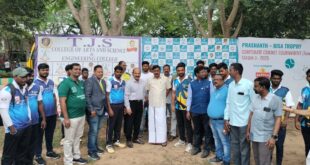Chennai, May, 31, 2022: A 95-year-old man who suffered an acute heart-attack, successfully underwent angioplasty and stenting followed by the implantation of a leadless pacemaker at Fortis Malar Hospital. The patient was presented at Fortis Malar with chest discomfort, hypertension, shortness of breath and left-shoulder pain for several hours. The patient’s heart rate and blood pressure had variations during evaluation in the emergency room.
Expert team of doctors headed by Dr. Sanjiv Agarwal, Director & Senior Consultant, Interventional Cardiologist at Fortis Malar identified that, “The patient had ST elevation (in ECG) in the anterior leads and his echocardiogram showed dysfunction of the left ventricle due to heart attack and there was corroborating evidence from the blood test”.
The patient’s prognosis was shared with the family and immediate medical intervention was provided by administration of blood thinners and clot busting drugs to stabilize the vital parameters before the patient was admitted in ICU. However,patient continued to have chest discomfort and ST elevation in ECG. So, the patient was then taken up for a Coronary Angiography. The angiograph reveled the blood vessel responsible for the heart attack still had very critical blockageand the additional blockage in one more blood vessel. So, the patient was treated with angioplasty implanting two stents in the left anterior descending artery as a lifesaving procedure. The blood vessels were severely calcified making the procedure challenging. Two days later, the patient developed Bradycardia (Slow heartbeat), along with low blood pressure. This necessitated the implantation of a pacemaker in the patient.
According to Dr. Agarwal, “The patient had developedBradycardia (Slow heartbeat), which is a known complication of heart attack and there was also drop in BP. This necessitated pacemaker implantation without which the patient would have had significant morbidity. In view of ongoing blood thinners and old age, decision was taken to put a leadless pacemaker. Hence, the situation was explained to the patient’s attendant, and they consented for implantation of a leadless permanent pacemaker.
The pacemaker was successfully implanted through venous access through the right groin. The patient was shifted back to ICU in stable condition. His symptoms significantly improved and his heartbeat and blood pressure was stable. The 95-year-old was discharged home in a stable condition and the patient is doing well after a month from the procedure.
 Expressnews
Expressnews







